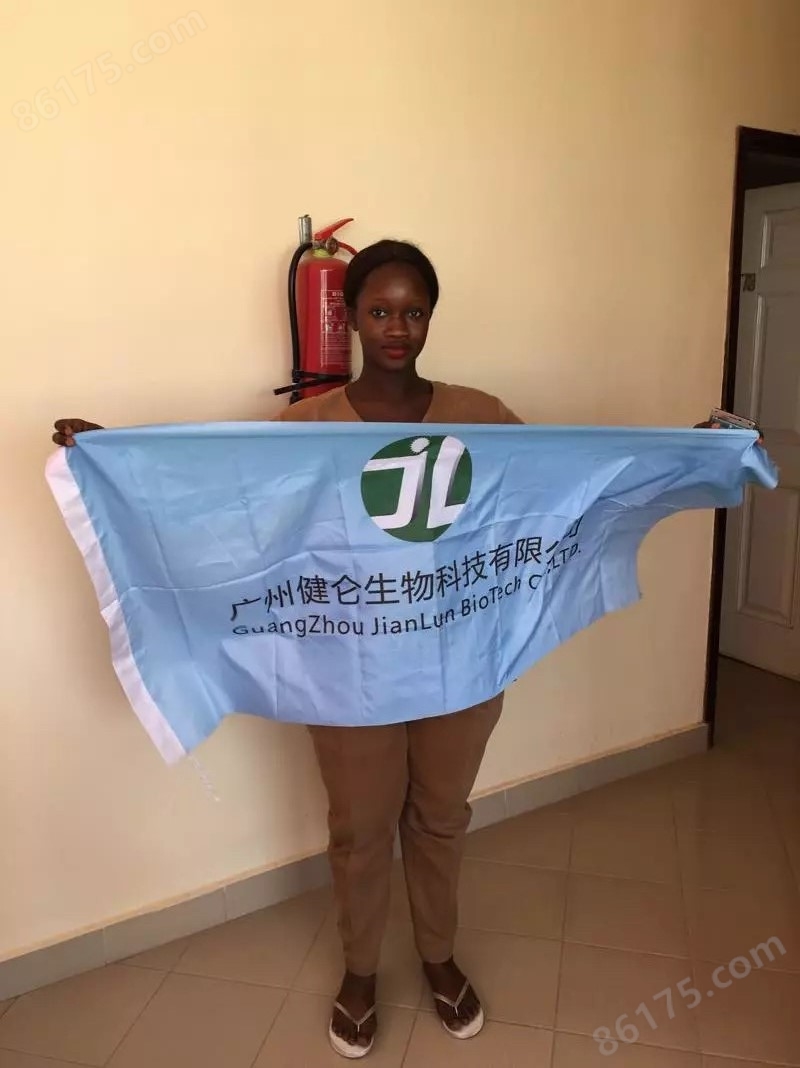- 产品描述
Cellabs热带传染病检测试剂盒
广州健仑生物科技有限公司
广州健仑长期供应各种生物原料,主要代理品牌:美国Seracare、西班牙Certest、美国Fuller、美国NOVABIOS、 Cellabs等等。
Cellabs公司是一个的生物技术公司,总部位于澳大利亚悉尼。专门研发与生产针对热带传染性疾病的免疫诊断试剂盒。其产品40多个国家和地区。1998年,Cellabs收购TropBio公司,进一步巩固其在研制热带传染病、寄生虫诊断试剂方面的位置。
Cellabs热带传染病检测试剂盒
该公司的Crypto/Giardia Cel IFA是国标*推荐的两虫检测IFA染色试剂、Crypto Cel Antibody Reagent是UK DWI水质安全评估检测的*抗体。
主要产品包括:隐孢子虫诊断试剂,贾第虫诊断试剂,疟疾诊断试剂,衣原体检测试剂,丝虫诊断试剂,锥虫诊断试剂等。
广州健仑生物科技有限公司与cellabs达成代理协议,欢迎广大用户咨询订购。
我司还提供其它进口或国产试剂盒:登革热、疟疾、流感、A链球菌、合胞病毒、腮病毒、乙脑、寨卡、黄热病、基孔肯雅热、克锥虫病、违禁品滥用、肺炎球菌、军团菌、化妆品检测、食品安全检测等试剂盒以及日本生研细菌分型诊断血清、德国SiFin诊断血清、丹麦SSI诊断血清等产品。
欢迎咨询
欢迎咨询2042552662
【Seracare产品介绍】
货号 | 产品名称 | 产品描述 | 规格 | |
免疫荧光试剂盒(IFA kit) | ||||
KR1 | Crypto Cel | 隐孢子虫(Cryptosporidium)间接免疫荧光检测试剂 | 50 Test | |
KR2 | Crypto/Giardia Cel | 隐孢子虫&贾第虫(Cryptosporidium & Giardia)间接免疫荧光检测试剂 | 50 Test | |
KG1 | Giardia Cel | 贾第虫(Giardia)间接免疫荧光检测试剂 | 50 Test | |
KC1 | Chlamydia Cel | 沙眼衣原体(Chlamydia trachomatis)间接免疫荧光检测试剂 | 50 Test | |
KC2 | Chlamydia Cel LPS | 衣原体 lipopolysaccharide (LPS)间接免疫荧光检测试剂 | 50 Test | |
KC3 | Chlamydia Cel Pn | 肺炎衣原体(Chlamydia pneumoniae)间接免疫荧光检测试剂 | 50 Test | |
KP1 | Pneumo Cel | 卡氏肺孢子虫(Pneumocystis carinii)间接免疫荧光检测试剂 | 50 Test | |
KP2 | Pneumo Cel Indirect | 卡氏肺孢子虫( Pneumocystis carinii)间接免疫荧光检测试剂 | 50 Test | |
酶免试剂盒 ELISA kit | ||||
KG2 | Giardia CELISA | 贾第虫(Giardia)ELISA kit | 96 Test | |
KE1 | Entamoeba CELISA Path | 溶组织内阿米巴(Entamoeba histolytica) ELISA kit | 96 Test | |
KF1 & KF2 | Filariasis CELISA | 班氏丝虫(Wuchereria bancrofti ) ELISA kit |
| |
KM2 | Malaria Antigen (HRP2) CELISA | 恶性疟原虫(Plasmodium falciparum) 抗原 ELISA kit | 192 Test | |
KMC3 | Pan Malaria Antibody CELISA | 间日、三日、恶性及卵形疟疾(Malaria)ELISA IgG kit | 192 Test | |
KT2 | T. cruzi IgG CELISA | 克氏锥虫(Trypanosoma cruzi) ELISA IgG kit | 192 Test | |
KT3 | Toxocara IgG CELISA | 弓首线虫(Toxocara canis) ELISA IgG kit | 192 Test | |
KF3 | Filariasis Ab (Bm14) CELISA | 淋巴丝虫病(lymphatic filariasis) ELISA IgG kit | 480 Test | |
KM7 | Quantimal™ pLDH Malaria CELISA | 疟疾pLDH抗体检测 ELISA kit | 96 Test | |
二维码扫一扫
【公司名称】 广州健仑生物科技有限公司
【】 杨永汉
【】
【腾讯 】 2042552662
【公司地址】 广州清华科技园创新基地番禺石楼镇创启路63号二期2幢101-3室
【企业文化】



亚热带是世界上一个重要的气候带。竺可桢认为亚热带气候的主要特点是“冬月微寒,足使喜温的热带作物不能良好生长。其另一特点为每年冬季虽有冰雪,但无霜期在8个月以上,使农作物一年可有两造的收获”。亚热带有冷、热两季,冷季种喜凉作物,热季种喜温作物,喜凉和喜温不同生态型作物一年两熟或三熟,是亚热带农业的基本特征。
我国的亚热带位于秦岭、淮河以南,雷州半岛以北,横断山脉以东(22~34°N,98°E以东)的广大地区。涉及16个省市(包括中国台湾省),面积约2.4×106km2,约占全国国土面积的1/4,素有“七山一水二分田”或“八山一水一分田”之说,人口约占全国总人口的一半。我国亚热带属东岸湿润季风区,位置比西岸气候型偏南5~8个纬度,比大陆气候型偏北6~7个纬度。与世界同纬度比,除沙漠地区外,是zui暖热的地区,雨量远比同纬度的充沛,生物资源丰富,四季长青,土壤肥沃,生物生产力高,农作物高产优质,是我国主要的农林产区。
土壤偏酸性分布着大范围的红壤和黄土。本区土壤由于受雨水淋溶和常年的微生物分解,大部分地区相对其他地区土壤贫瘠。
植被特点是根系广大,不论是在湿润地区或是干旱地区。主要植被类型有亚热带常绿阔叶林、亚热带常绿硬叶林、沙漠植被。
我国亚热带丘陵山地雨热基本同季,光热水资源丰富。年总辐射量多在38×108~54×108焦耳/米2,全年大于10℃的积温在4250~8000℃之间,大于10℃持续天数,在220~350天左右。年降水量为1000~2000毫米,多数降水在作物需水较多的温暖季节。在主要农林作物生长季节(4~10月)的太阳辐射、积温和降水可占全年总量的70~85%,光、热、水的配合,有利于亚热带各种喜温作物,林果和灌木的生长,具有发展大农业的有利条件。
本区山峦起伏,沟谷纵横。由于山岭对光、热、水的影响,在垂直方向上形成了明显的气候带(层),尤其是中山层存在明显的过渡性气候。该层的许多大气物理现象和气候特征是本区所*的。随着山脉走向,坡地方位和地形起伏的不同,在同一地区或同一海拔高度上的阳坡和阴坡,坡地和盆谷地,可以出现迥然不同的气候,有“十里不同天”的说法。
The subtropical zone is an important climate in the world. Mr. Zhu Keji thinks that the main characteristic of the subtropical climate is “the cold winter months, which make the tropical crops that are not warm enough to grow well. Another feature is that although there is ice and snow every winter, the frost-free period is more than 8 months, and the crop can be used for one year. There are two harvests." In the subtropics, there are cold and hot seasons, cool and cool crops, hot seasonal and warm crops, and cool and thermophilic ecological crops with two or three crops a year, which are the basic characteristics of subtropical agriculture.
China's subtropical areas are located in the vast areas of the Qinling Mountains, the south of the Huaihe River, the north of the Leizhou Peninsula, and east of the Hengduan Mountains (22 to 34°N, east of 98°E). It covers 16 provinces and municipalities (including Taiwan Province) and covers an area of approximay 2.4×106km2, accounting for approximay 1/4 of the country’s total land area. It is known as “seven mountains and one water and two fields” or “eight mountains and one water and one field”. The population accounts for about half of the country’s total population. China's subtropical region is located in the humid monsoon region on the east coast of the subtropical zone, and is located 5 to 8 latitudes south of the west coast climate climatic zone and 6 to 7 latitudes farther than the continental climatic type. Compared with the same latitudes in the world, except for the desert areas, it is the most warm and hot area, with rainfall far more abundant than the same latitude, rich in biological resources, evergreen, fertile soil, high biological productivity, and high yield and quality of crops. It is the main agricultural and forestry industry in China. Production area.
The soil is acidic with a wide range of red soil and loess. Due to the leaching of rainwater and year-round microbial decomposition, most of the soil in this area is barren relative to other areas.
The vegetation is characterized by a wide range of root systems, whether in wet areas or in arid regions. The main vegetation types are subtropical evergreen broad-leaved forests, subtropical evergreen hard-leaf forests, and desert vegetation.
Subtropical hilly areas in China have basically the same seasonal rain and heat, and abundant light and hot water resources. The annual total amount of radiation is 38 × 108 ~ 54 × 108 joules / m 2, the annual accumulated temperature greater than 10 °C between 4250 ~ 8000 °C, more than 10 °C last days, 220 ~ 350 days. The annual precipitation is 1000 to 2000 mm, and most of the precipitation is in the warm season when the crop needs more water. Solar radiation, accumulative temperature and precipitation in the main agricultural and forestry crop growing season (from April to October) can account for 70 to 85% of the total annual amount. The combination of light, heat and water is beneficial to various subtropical thermophilic crops. And the growth of shrubs has the advantage of developing large agriculture.
The area is undulating and there are numerous valleys. Because of the influence of the mountains on light, heat, and water, a clear climatic zone (layer) is formed in the vertical direction, especially in the mid-level where there is a clear transitional climate. Many atmospheric physical phenomena and climatic features in this layer are unique to this area. With the trend of mountain ranges, different slope locations and topographic relief, in the same area or on the same elevation, sunny slopes and shady slopes, slopes and basin valleys can have very different climates, and there are "ten different days" arguments.



